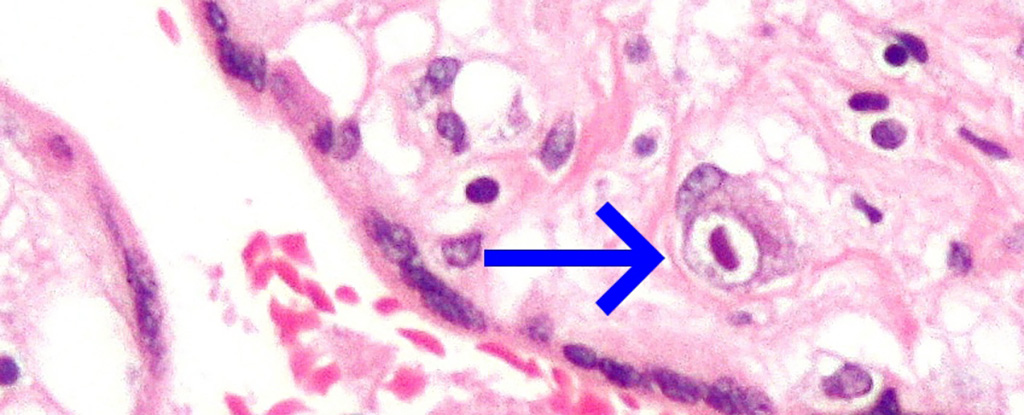Researchers have unearthed an intriguing connection between persistent gut infections caused by a prevalent virus and the emergence of Alzheimer’s disease in certain individuals.
Cytomegalovirus (CMV), a member of the herpesvirus family, is a common pathogen that typically establishes its presence during childhood. Following initial infection, it lingers within the host’s body indefinitely, albeit in a latent state, according to sciencealert.com.
By the age of 80, nearly 90 percent of the population carries CMV antibodies in their bloodstream. This virus spreads through bodily fluids—such as saliva, blood, breast milk, and semen—but only during periods of viral activation.
Alzheimer pathology linked to Herpes virus:
— Loubna🇲🇦🇩🇪 (@Loubnalabriny) January 5, 2025
Studies have suggested that viruses may play a role in certain neurodegenerative diseases. Some of these studies have linked the herpes simplex virus-1 (HSV-1) and Alzheimer’s disease. The herpes simplex virus type can affect the brain… pic.twitter.com/DI2vmDlTxD
In a particularly unfortunate subset of individuals, CMV appears to exploit a biological vulnerability, remaining active long enough to travel along the gut-brain axis, more formally known as the vagus nerve—a vital communication pathway connecting the gastrointestinal system to the brain, according to the reports by sciencealert.com.
Once the virus infiltrates the brain, it may incite the immune system into a state of chronic overactivation, potentially exacerbating the neuronal damage linked to Alzheimer’s disease.
This discovery, while alarming, offers a glimmer of hope. It suggests the possibility of employing antiviral therapies to mitigate the risk of Alzheimer’s for some individuals. Researchers are now focusing on devising blood tests capable of detecting active CMV infections within the gastrointestinal tract, as per sciencealert.com.
Earlier this year, scientists at Arizona State University identified a fascinating link between a specialized subtype of microglial cells associated with Alzheimer’s—dubbed CD83(+) due to its genetic peculiarities—and elevated levels of immunoglobulin G4 in the transverse colon, implying a potential infectious catalyst.

Microglia, the central nervous system’s cleanup crew, diligently scavenge for cellular debris, amyloid plaques, and damaged neurons. However, when these cells are perpetually activated, they unleash inflammatory agents that, over time, contribute to neuronal destruction—a hallmark of Alzheimer’s pathology.
“We believe we’ve uncovered a biologically distinct subtype of Alzheimer’s that may account for 25% to 45% of cases,” explained biomedical scientist and lead researcher Ben Readhead. “This form of Alzheimer’s is characterized by classic amyloid plaques and tau protein tangles, along with a unique biological signature involving viruses, antibodies, and immune responses in the brain.”
The team analyzed an array of donated tissues—including samples from the colon, vagus nerve, brain, and spinal fluid—collected from 101 individuals, 66 of whom had been diagnosed with Alzheimer’s. Their findings highlighted how the virus could traverse the body’s interconnected systems, challenging the traditional view of Alzheimer’s as solely a neurological disorder, according to the reports by sciencealert.com.
Researchers have even identified traces of the virus within the vagus nerve, tracing CMV antibodies from the intestinal lining to cerebrospinal fluid and ultimately to the brain itself. These findings were corroborated in an independent cohort.
Additionally, laboratory studies using human brain cell models revealed that CMV infection intensified the production of amyloid and phosphorylated tau proteins, key contributors to neuronal degradation and death.
Crucially, these findings pertain to a narrow subset of individuals harboring chronic intestinal CMV infections. Given the ubiquity of CMV exposure, its presence does not automatically signify an imminent risk for all, as per sciencealert.com.
Readhead and his team are striving to develop a diagnostic blood test to identify intestinal CMV infections early, paving the way for timely antiviral interventions and the potential prevention of this particular Alzheimer’s subtype.





